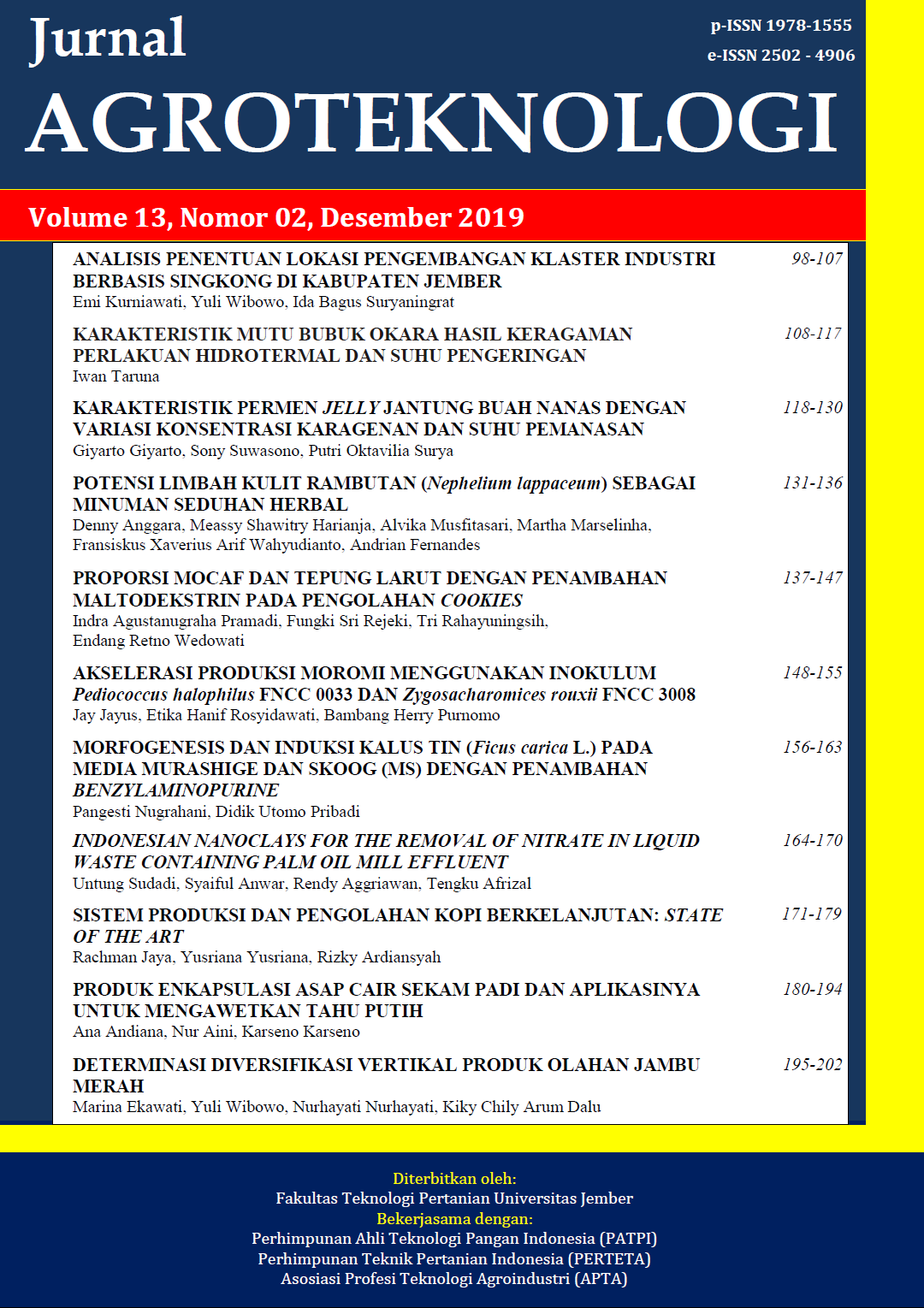AKSELERASI PRODUKSI MOROMI MENGGUNAKAN INOKULUM Pediococcus halophilus FNCC 0033 DAN Zygosaccharomyces rouxii FNCC 3008
Abstract
The increasing of consumer demand has forced the small scale soy sauce factories to expand the quality and quantity of their production. However, they have a major problem on the duration of spontaneous fermentation for the production of moromi which take at least 2 months time. Therefore, an effort to shorten the fermentation time is proposed in this study by the applications of controlled fermentation using protease producing microbes. This study was aimed to compare the spontaneous and controlled fermentation of moromi using a single P. halophilus FNCC 0033 as well as a combination of P. halophilus FNCC 0033 and Z. rouxii FNCC 3008 as the inoculum for extended fermentation process of soybean in salt solution at pH 8.0. The quality parameter of moromi observed were pH, dissolved protein, total nitrogen, microbial count, and sensory evaluation by expert panelist. The result showed that controlled fermentation of moromi using both single P. halophilus FNCC 0033 or a combination of P. halophilus FNCC 0033 and Z. rouxii FNCC 3008 could shorten the duration of moromi fermentation time, from usually 8 weeks becomes 2 weeks only. The highest dissolve proteins content was detected in the moromi prepared by a single P. halophilus FNCC 0033 rather than its combination with Z. rouxii FNCC 3008. Moreover, result of sensory evaluation showed that P. halophilus FNCC 0033 fermented moromi exhibit more acidic flavor, indicating the ability of this lactic acid producing bacteria in producing both protease and lactic acids during the fermentation activity.
Keywords: moromi, Pediococcus halophilus, soy sauce, Zygosaccharomyces rouxii

This work is licensed under a Creative Commons Attribution-ShareAlike 4.0 International License.
Jurnal Agroteknologi has CC-BY-SA or an equivalent license as the optimal license for the publication, distribution, use, and reuse of scholarly work. Authors who publish with this journal retain copyright and grant the journal the right of first publication with the work simultaneously licensed under a Creative Commons Attribution-ShareAlike 4.0 International License that allows others to share the work with an acknowledgment of the work's authorship and initial publication in this journal.
 JURNAL AGROTEKNOLOGI
JURNAL AGROTEKNOLOGI 










.png)

